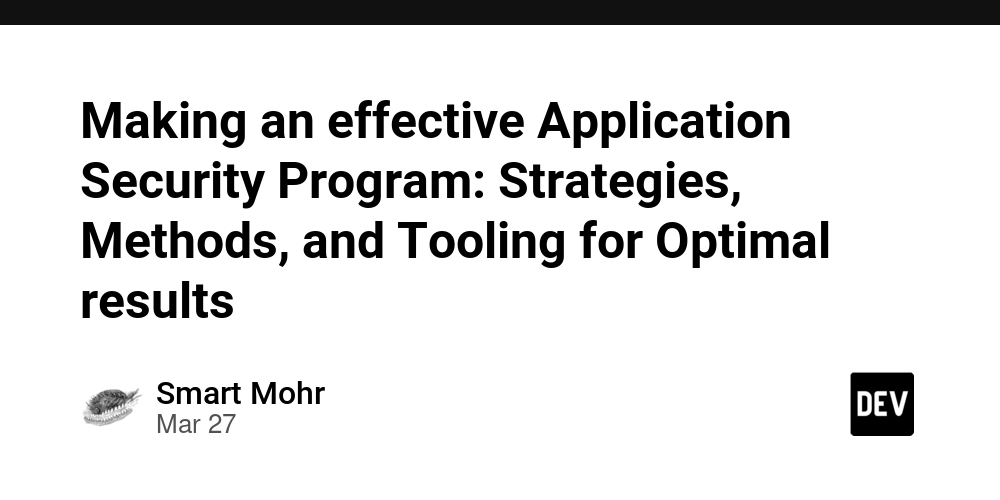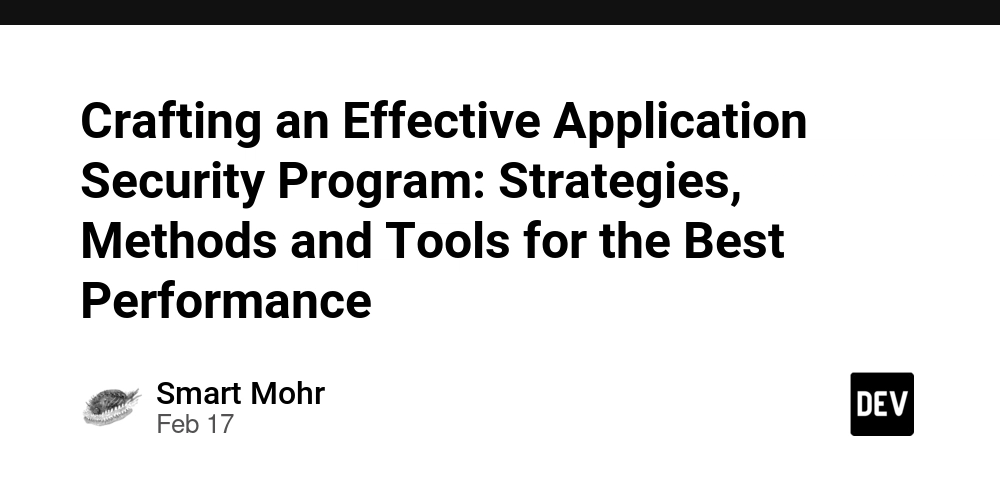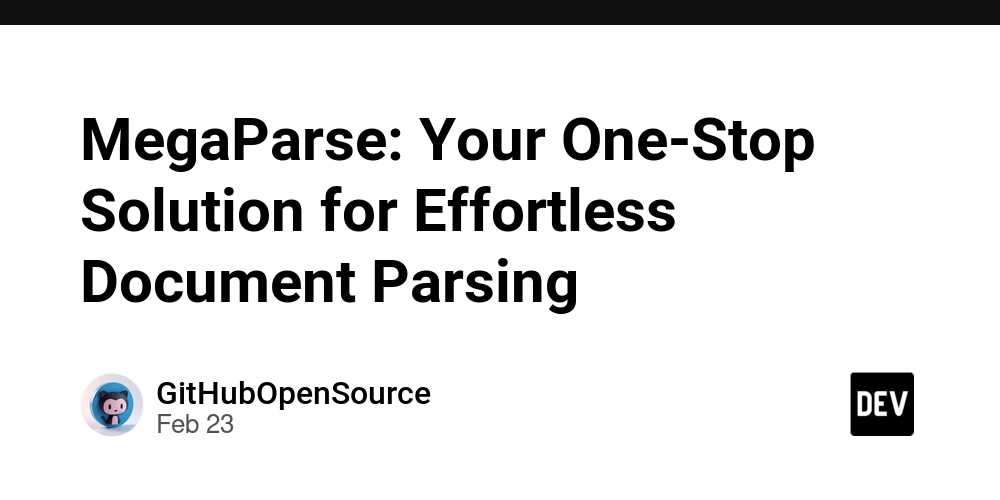Making an effective Application Security Program: Strategies, Methods, and Tooling for Optimal results
AppSec is a multifaceted and robust method that goes beyond vulnerability scanning and remediation. A systematic, comprehensive approach is required to incorporate security into every stage of development. The constantly evolving threat landscape and increasing complexity of software architectures is driving the need for a proactive and comprehensive approach. This comprehensive guide explores the essential elements, best practices, and cutting-edge technologies that underpin an extremely effective AppSec program, which allows companies to safeguard their software assets, reduce the risk of cyberattacks, and build the culture of security-first development. The success of an AppSec program is built on a fundamental change in the way people think. Security must be considered as a vital part of the development process, and not just an afterthought. This paradigm shift requires close collaboration between security personnel operators, developers, and personnel, removing silos and creating a belief in the security of the software they create, deploy and maintain. DevSecOps allows organizations to incorporate security into their process of development. This means that security is addressed throughout the entire process starting from the initial ideation stage, through development, and deployment until the ongoing maintenance. Central to this collaborative approach is the formulation of clearly defined security policies standards, guidelines, and standards which provide a structure for secure coding practices threat modeling, and vulnerability management. These policies should be based on industry best practices, including the OWASP Top Ten, NIST guidelines, and the CWE (Common Weakness Enumeration) in addition to taking into account the particular requirements and risk profile of the specific application as well as the context of business. By codifying these policies and making them accessible to all stakeholders, organizations can guarantee a consistent, standard approach to security across all their applications. To implement these guidelines and make them actionable for developers, it's vital to invest in extensive security training and education programs. These initiatives must provide developers with the knowledge and expertise to write secure software and identify weaknesses and implement best practices for security throughout the development process. Training should cover a wide array of subjects, from secure coding techniques and common attack vectors to threat modeling and secure architecture design principles. Organizations can build a solid foundation for AppSec by encouraging an environment that promotes continual learning and providing developers with the tools and resources they require to integrate security into their daily work. In addition to training organisations must also put in place rigorous security testing and validation procedures to discover and address weaknesses before they are exploited by criminals. This requires a multi-layered method that combines static and dynamic analysis techniques in addition to manual code reviews as well as penetration testing. At the beginning of the development process static Application Security Testing tools (SAST) can be utilized to identify vulnerabilities such as SQL Injection, Cross-Site Scripting (XSS) and buffer overflows. Dynamic Application Security Testing (DAST) tools, on the other hand can be used to simulate attacks against running applications, identifying vulnerabilities that might not be detected using static analysis on its own. The automated testing tools are extremely useful in the detection of vulnerabilities, but they aren't a solution. Manual penetration tests and code reviews by skilled security professionals are also critical for uncovering more complex, business logic-related vulnerabilities that automated tools could miss. By combining automated testing with manual validation, organizations can obtain a more complete view of their application security posture and make a decision on the best remediation strategy based upon the severity and potential impact of the vulnerabilities identified. To enhance the efficiency of the effectiveness of an AppSec program, organizations should consider leveraging advanced technologies such as artificial intelligence (AI) and machine learning (ML) to enhance their security testing and vulnerability management capabilities. AI-powered tools can examine huge amounts of code and application data, and identify patterns and irregularities that could indicate security concerns. These tools can also increase their ability to detect and prevent emerging threats by learning from vulnerabilities that have been exploited and previous attacks patterns. Code property graphs are an exciting AI application for AppSec. They can be used to detect and repair vulnerabilities more precisely and efficiently. CPGs are a rich representation of the codebase of an application that not only captures its synt

AppSec is a multifaceted and robust method that goes beyond vulnerability scanning and remediation. A systematic, comprehensive approach is required to incorporate security into every stage of development. The constantly evolving threat landscape and increasing complexity of software architectures is driving the need for a proactive and comprehensive approach. This comprehensive guide explores the essential elements, best practices, and cutting-edge technologies that underpin an extremely effective AppSec program, which allows companies to safeguard their software assets, reduce the risk of cyberattacks, and build the culture of security-first development.
The success of an AppSec program is built on a fundamental change in the way people think. Security must be considered as a vital part of the development process, and not just an afterthought. This paradigm shift requires close collaboration between security personnel operators, developers, and personnel, removing silos and creating a belief in the security of the software they create, deploy and maintain. DevSecOps allows organizations to incorporate security into their process of development. This means that security is addressed throughout the entire process starting from the initial ideation stage, through development, and deployment until the ongoing maintenance.
Central to this collaborative approach is the formulation of clearly defined security policies standards, guidelines, and standards which provide a structure for secure coding practices threat modeling, and vulnerability management. These policies should be based on industry best practices, including the OWASP Top Ten, NIST guidelines, and the CWE (Common Weakness Enumeration) in addition to taking into account the particular requirements and risk profile of the specific application as well as the context of business. By codifying these policies and making them accessible to all stakeholders, organizations can guarantee a consistent, standard approach to security across all their applications.
To implement these guidelines and make them actionable for developers, it's vital to invest in extensive security training and education programs. These initiatives must provide developers with the knowledge and expertise to write secure software and identify weaknesses and implement best practices for security throughout the development process. Training should cover a wide array of subjects, from secure coding techniques and common attack vectors to threat modeling and secure architecture design principles. Organizations can build a solid foundation for AppSec by encouraging an environment that promotes continual learning and providing developers with the tools and resources they require to integrate security into their daily work.
In addition to training organisations must also put in place rigorous security testing and validation procedures to discover and address weaknesses before they are exploited by criminals. This requires a multi-layered method that combines static and dynamic analysis techniques in addition to manual code reviews as well as penetration testing. At the beginning of the development process static Application Security Testing tools (SAST) can be utilized to identify vulnerabilities such as SQL Injection, Cross-Site Scripting (XSS) and buffer overflows. Dynamic Application Security Testing (DAST) tools, on the other hand can be used to simulate attacks against running applications, identifying vulnerabilities that might not be detected using static analysis on its own.
The automated testing tools are extremely useful in the detection of vulnerabilities, but they aren't a solution. Manual penetration tests and code reviews by skilled security professionals are also critical for uncovering more complex, business logic-related vulnerabilities that automated tools could miss. By combining automated testing with manual validation, organizations can obtain a more complete view of their application security posture and make a decision on the best remediation strategy based upon the severity and potential impact of the vulnerabilities identified.
To enhance the efficiency of the effectiveness of an AppSec program, organizations should consider leveraging advanced technologies such as artificial intelligence (AI) and machine learning (ML) to enhance their security testing and vulnerability management capabilities. AI-powered tools can examine huge amounts of code and application data, and identify patterns and irregularities that could indicate security concerns. These tools can also increase their ability to detect and prevent emerging threats by learning from vulnerabilities that have been exploited and previous attacks patterns.
Code property graphs are an exciting AI application for AppSec. They can be used to detect and repair vulnerabilities more precisely and efficiently. CPGs are a rich representation of the codebase of an application that not only captures its syntax but also complex dependencies and relationships between components. AI-driven tools that utilize CPGs are able to perform a deep, context-aware analysis of the security of an application, and identify vulnerabilities which may have been overlooked by traditional static analysis.
Furthermore, CPGs can enable automated vulnerability remediation by making use of AI-powered code transformation and repair techniques. In order to understand the semantics of the code and the nature of the weaknesses, AI algorithms can generate specific, contextually-specific solutions that address the root cause of the issue instead of just treating the symptoms. This technique does not just speed up the treatment but also lowers the chance of breaking functionality or creating new security vulnerabilities.
Integration of security testing and validation security testing into the continuous integration/continuous deployment (CI/CD) pipeline is another key element of an effective AppSec. Automating security checks and making them part of the build and deployment process enables organizations to identify weaknesses early and stop them from reaching production environments. The shift-left security method can provide faster feedback loops and reduces the time and effort needed to discover and fix vulnerabilities.
autonomous AI In order for organizations to reach this level, they must invest in the appropriate tooling and infrastructure that will enable their AppSec programs. The tools should not only be utilized for security testing however, the platforms and frameworks which allow integration and automation. Containerization technologies such as Docker and Kubernetes are able to play an important function in this regard, providing a consistent, reproducible environment to conduct security tests while also separating the components that could be vulnerable.
Effective tools for collaboration and communication are just as important as technology tools to create the right environment for safety and helping teams work efficiently with each other. Jira and GitLab are problem tracking systems that help teams to manage and prioritize security vulnerabilities. Tools for messaging and chat like Slack and Microsoft Teams facilitate real-time knowledge sharing and communications between security experts.
The ultimate effectiveness of the success of an AppSec program does not rely only on the technology and tools employed, but also the people and processes that support the program. To create a culture of security, you must have strong leadership with clear communication and a dedication to continuous improvement. Organizations can foster an environment in which security is more than a box to mark, but an integral aspect of growth by fostering a sense of accountability as well as encouraging collaboration and dialogue, providing resources and support and encouraging a sense that security is an obligation shared by all.
In order for their AppSec programs to remain effective over time, organizations need to establish significant metrics and key-performance indicators (KPIs). These KPIs help them keep track of their progress and help them identify areas of improvement. These metrics should cover the entirety of the lifecycle of an app including the amount and type of vulnerabilities found during the development phase to the time needed for fixing issues to the overall security measures. By constantly monitoring and reporting on these metrics, businesses can show the value of their AppSec investments, spot trends and patterns and take data-driven decisions regarding where to concentrate their efforts.
In addition, organizations should engage in continual learning and training to keep up with the rapidly evolving threat landscape and the latest best practices. This might include attending industry conferences, taking part in online training programs, and collaborating with external security experts and researchers in order to stay abreast of the latest developments and methods. In fostering a culture that encourages continuing learning, organizations will ensure that their AppSec program is flexible and resilient to new threats and challenges.
It is important to realize that app security is a process that requires ongoing investment and commitment. As new technologies emerge and development methods evolve companies must constantly review and update their AppSec strategies to ensure that they remain effective and aligned with their business goals. If they adopt a stance of continuous improvement, fostering cooperation and collaboration, as well as leveraging the power of modern technologies such as AI and CPGs, organizations can establish a robust, adaptable AppSec program that not only protects their software assets, but allows them to be able to innovate confidently in an increasingly complex and ad-hoc digital environment.autonomous AI









































































































































































![[The AI Show Episode 142]: ChatGPT’s New Image Generator, Studio Ghibli Craze and Backlash, Gemini 2.5, OpenAI Academy, 4o Updates, Vibe Marketing & xAI Acquires X](https://www.marketingaiinstitute.com/hubfs/ep%20142%20cover.png)



























































































































![[FREE EBOOKS] The Kubernetes Bible, The Ultimate Linux Shell Scripting Guide & Four More Best Selling Titles](https://www.javacodegeeks.com/wp-content/uploads/2012/12/jcg-logo.jpg)



![From drop-out to software architect with Jason Lengstorf [Podcast #167]](https://cdn.hashnode.com/res/hashnode/image/upload/v1743796461357/f3d19cd7-e6f5-4d7c-8bfc-eb974bc8da68.png?#)






































































































.png?#)




.jpg?#)
































_Christophe_Coat_Alamy.jpg?#)








































































































![Rapidus in Talks With Apple as It Accelerates Toward 2nm Chip Production [Report]](https://www.iclarified.com/images/news/96937/96937/96937-640.jpg)








































































































































